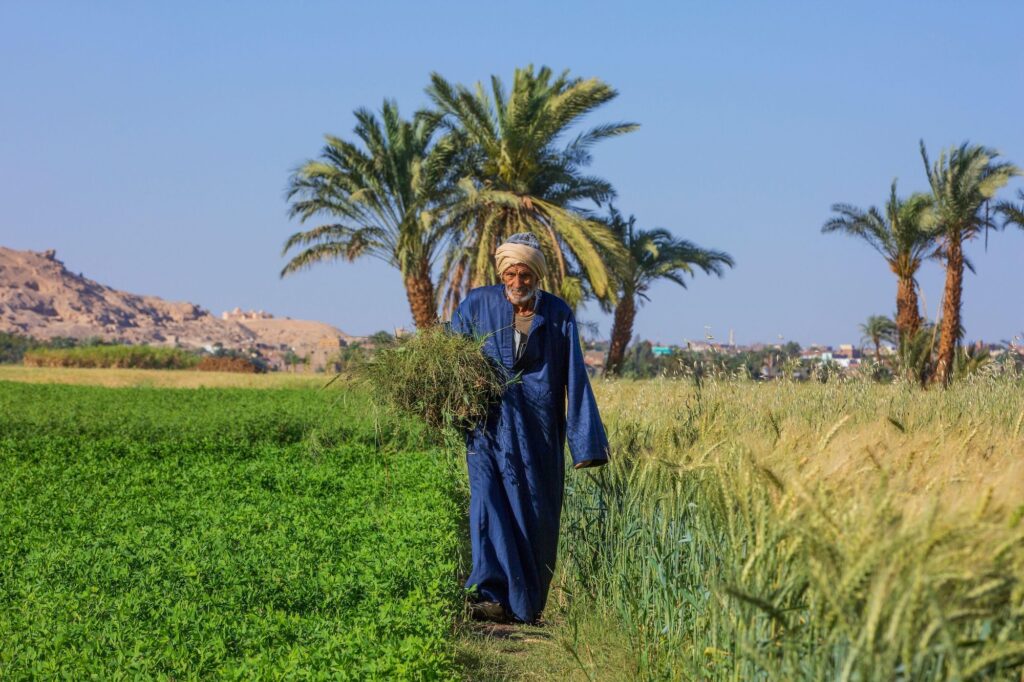
Alamy via Reuters Connect
Artificial intelligence is one of the hottest topics in global agriculture. Two concepts in particular – generative AI and analytical AI – have captured farmers’ attention.
Generative AI helps process large and varied sets of unstructured data and can perform several tasks at once, while analytical AI uses this data to make meaningful predictions.
Think of the water shortage problem across the Middle East. Generative AI can help a farmer understand water patterns to improve irrigation based on large datasets, such as geospatial and weather data.
Analytical AI can generate new ideas for farmers about when and how much to irrigate to increase water use and energy efficiency.
AI-driven farm machinery can also sow seeds, remove weeds and apply fertilisers, pesticides and water efficiently.
Ask any teenager about their career choices: farming will almost certainly not be in the top 10
Generative and analytical AI are particularly useful for better on-farm management, marketing and agronomy, helping farmers boost their incomes – something urgently needed in agriculture, which is still defined by low margins.
Those margins have made farming an increasingly unpopular business around the world. Ask any teenager about their favourite career choice: farming will almost certainly not be in the top 10.
Unless farmers can grow food on large landholdings resembling corporate farming, agriculture provides low returns despite long working hours. Typically farm workers make less than $2 per hour. Across the Middle East and North Africa, only those farmers who have access to water generate meaningful revenues.
The average income of a smallholder ranges from $20,000 to $60,000.
It is, therefore, no surprise that the median age of farmers is increasing very quickly around the world. It is 58 in the US and 57 in the EU. In Arab countries, it ranges from 52 (Egypt) to 61 (Oman).
This represents a silent crisis. The stewards of food production are soon going to reach retirement age. Only 10 percent of farmers are below the age of 30. Farming often takes a heavy toll on workers’ health, causing orthopaedic and other problems.
The human factor
This is where AI and other technology can come in. But while AI can enhance productivity, the cost of farm equipment remains a significant barrier – robotic harvesters alone range from $40,000 to $2 million.
Additionally, generative and analytical AI require large amounts of energy to operate efficiently. Maintenance and operational expenses need to be substantial before AI-driven agriculture can yield the hoped-for returns.
So, for the time being, the role of human labour in agriculture cannot be overlooked. It is unlikely that the role of human workers will be significantly reduced in the next 15-20 years.
Even beyond this period, humans will still be needed to oversee AI operations and provide essential maintenance.
However, at some point, the human factor may be entirely replaced by AI. Therefore, governments across the region must identify strategies for managing the technology and safeguarding agriculture.
First and foremost, the younger generation must be incentivised to pursue careers in agriculture. Their roles need to extend beyond traditional agricultural engineering; would-be farmers must be educated to university level to explore and exploit the opportunities that technology offers.
To be clear, future AI engineers have the potential to enhance agricultural productivity and increase farming incomes, making agriculture a profitable field for young people.
But to achieve this, efforts between governments, universities and farmers must be co-ordinated. Then such collaboration can significantly boost yields and farming incomes in a region heavily affected by climate change and food insecurity.
Martin Keulertz is a lecturer in environmental management at the University of the West of England, Bristol



